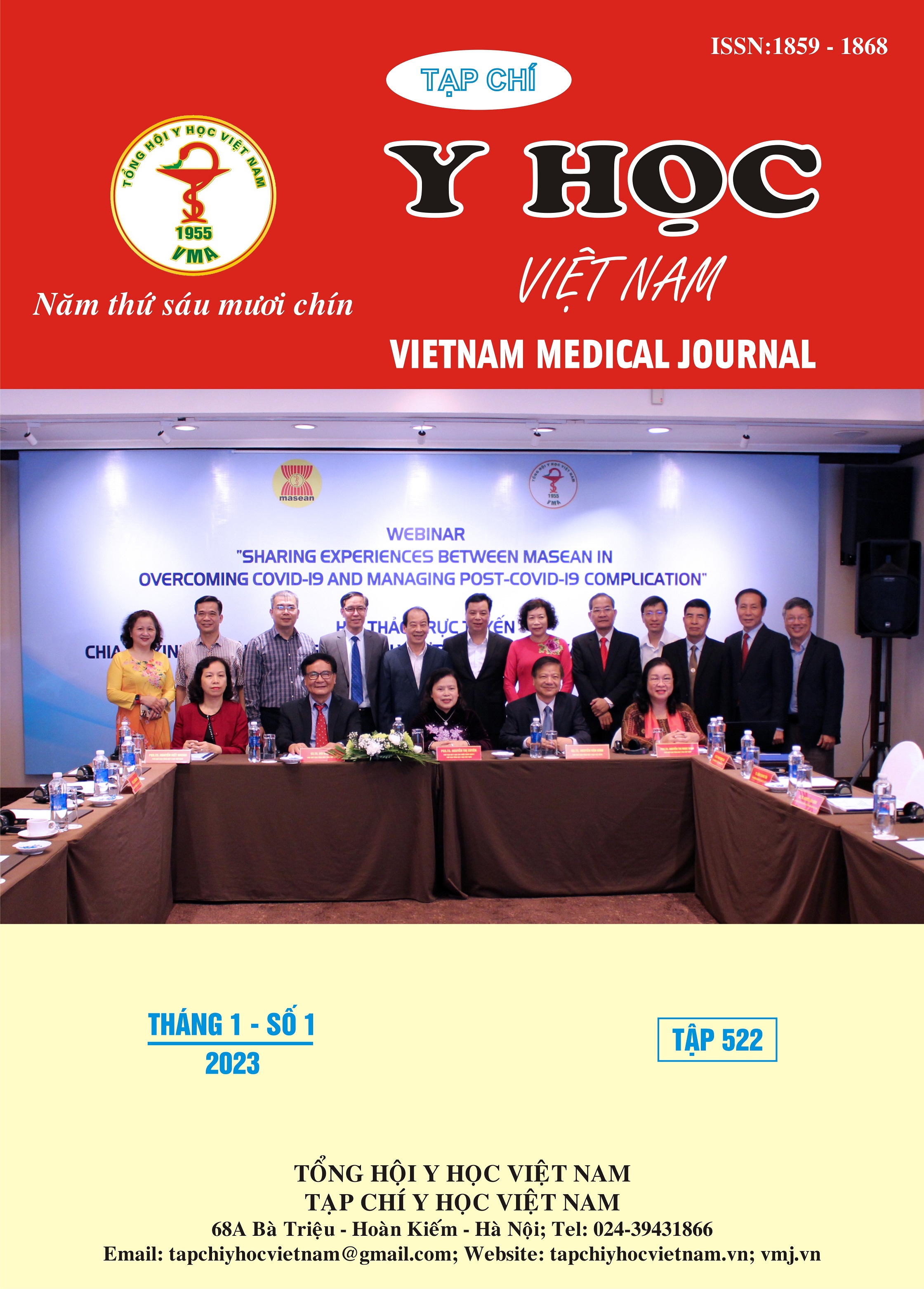CORRELATION OF HEMODYNAMIC PARAMETERS MEASURED BY PHYSIOFLOW WITH CORRESPONDING PARAMETERS MEASURED BY PICCO IN SEPTIC SHOCK PATIENTS
Main Article Content
Abstract
Objective: to describe the correlation of several hemodynamic parameters measured by PhysioFlow with corresponding parameters measured by PiCCO in septic shock patients. Methods: A prospective descriptive study on 32 patients with septic shock according to Sepsis 3 criteria. Patients were measured hemodynamic parameters by the thoracic impedance measurement technique (Physioflow) and corresponding parameters by PiCCO at the admission and during emergency management at at the A9 emergency center, Bach Mai Hospital. Study was carried out from from June 1, 2021 to August 15, 2022. Results: 32 patients were studied including 22 male patients (68.8%), and 10 female patients (31.2%), mean age was 60.8 ± 17.7 years old. CI measured by Physioflow (3.70±1.15 l/p/m2) and CI measured by PiCCO (3.71±1.34 l/p/m2) , SVRI measured by Physioflow (1955±941 ) d.s/cm5/m2) and SVRI measured by PiCCO (1933±1103 d.s/cm5/m2), SVI measured by Physioflow (32.8±10.3 ml/m2) and SVI measured by PiCCO (32 ,9±12.5 ml/m2 ). No statisticly significance was found between parameters measured by the 2 mothods. The hemodynamic parameters CI, SVRI, SVI measured by the Physioflow and PiCCO had a strong correlation and good agreement with r = 0.65 for CI, r = 0.84 for SVRI, r = 0.74 for SVI. Conclusions: The hemodynamic parameters measured by the thoracic impedance (Physioflow) are high accurate, which can replace the PiCCO for hemodynamic exploration on patients inh early septic shock stage.
Article Details
Keywords
Physioflow, PiCCO, hemodynamics, septic shock.
References
2. Singer M., Deutschman C.S., Seymour C.W. và cộng sự. (2016). The Third International Consensus Definitions for Sepsis and Septic Shock (Sepsis-3). JAMA, 315(8), 801–810.
3. Mai Văn Cường (2011). Nghiên cứu sự liên quan giữa áp lực tĩnh mạch trung tâm và áp lực mao mạch phổi bít ở bệnh nhân sốc nhiễm khuẩn và sốc tim. Luận văn tốt nghiệp bác sĩ nội trú bệnh viện. Trường Đại học Y Hà Nội. Tr 29-53.
4. Hernandez G, E, Boerma C, Dubin A, Bruhn A, Koopmans M, Edul VK, Ruiz C, Castro R, Pozo MO, Pedreros C, Veas E, Fuentealba A, Kattan E, Rovegno M, Ince C (2013). Severe abnormalities in microvascular perfused vessel density are associated to organ dysfunctions and mortality and can be predicted by hyperlactatemia and norepinephrine requirements in septic shock patients. Journal of Critical Care. 28, 358.
5. Vincent JL, Sakr Y, Sprung CL, Ranieri VM, Reinhart K, Gerlach H, Moreno R, Carlet J, Le Gall JR, Payen D (2006). Sepsis Occurrence in Acutely Ill Patients Investigators. Sepsis in European intensive care units: results of the SOAP study. Crit Care Med. 34:344-53.
6. Gan Liang Tan, Ping Wash Chan, Huck Chin Chew et al (2011). Measurement of cardiac output in patients with septic shock using arterial pressure wave form analysis in comparison with the pulmonary artery catheter: A pilot study. Chest, 140(4), 435-40.
7. Phùng Văn Dũng (2017). Ứng dụng kỹ thuật siêu âm doppler bằng USCOM để theo dõi và đánh giá huyết động ở bệnh nhân nhiễm khuẩn nặng và sốc nhiễm khuẩn. Luận văn thạc sỹ Y học, Đại học Y Hà Nội.
8. Young J. D (2004). The heart and circulation in severe sepsis. British Journal of Anaesthesia 93(1), 114-20.


